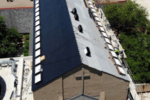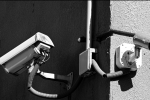December 23, 2017
Be Prepared; Save a Life, part 2

The priest’s prayer was unusual: “Please God, don’t let anyone code during the Christmas services.”
A year ago on Christmas Eve, our pianist was a few bars into “Away in a Manger” when he slumped over. No pulse. No respiration. Thankfully the AED—automated external defibrillator—was in the narthex, and people were trained how to use it. The congregation stayed calm and collected as parishioners strapped the AED onto Dale and the electric charge brought Dale’s heart back to life. The children were ushered into the choir room, the font was moved so EMT’s could bring in the stretcher, and people prayed in the pews.
Today, Dale is a healthy, vibrant octogenarian, tickling the ivories at churches across northern Kentucky and southern Ohio.
Still, it was not the Christmas Eve service anyone anticipated, and it shook the congregation. So the priest had been praying, “Please God, don’t let anyone code during the Christmas services.” And so far, no one has.
But on Advent I of this year—just a few days ago—during a congregation-wide breakfast between the two worship services, Martha Lew lost consciousness. A nurse pulled her out of the seat and flat onto the ground. Martha Lew’s pulse was faint, and she wasn’t responding. A parishioner ran upstairs for the AED. Other members of the congregation calmly called 911, moved tables, and prayed. By the time the EMTs arrived, Martha Lew was awake. Weak but awake. And determined to go to the hospital on her own steam, not in an ambulance. Answered prayer in many ways. She was going to be okay. And it had not happened during the Christmas services.
A year ago, I urged congregations to consider the purchase of an AED. I have heard from some who read the story of Dale and his miraculous survival and they responded by installing an AED. Thank you. God bless you.
If you read that blog and filed away the thought of purchasing an AED for another time or when there’s extra money in the budget, please reconsider. The American Red Cross estimates that access and improved training for AEDs could save 50,000 lives each year, including someone you know and love. According to the Red Cross, an AED is the only effective treatment for restoring a regular heart rhythm during sudden cardiac arrest and is an easy-to-operate tool for someone with no medical background. For each minute defibrillation is delayed, the chance of survival is reduced approximately 10%. The average response time first responders after 911 is called is eight to 10 minutes. When someone is on the floor, without a pulse, sixty seconds is an eternity.
Our congregation is an anomaly perhaps. We have 30 kids in a children’s choir, a teen youth group that regularly attracts 20 or more, and an Episcopal Church Women event last month had nearly 50 women, many in their 30s and 40s. We are not a congregation of only older folks who might have greater need for an AED. But twice in a year, we’ve pulled the AED from the shelf in an emergency. The first time, it saved a life. Thank goodness, we didn’t need it the second time. But if (and when) there’s a third time, we’ll be ready.
Please consider the purchase of an AED for your congregation. What better time is there than Christmas to give a gift of life?





